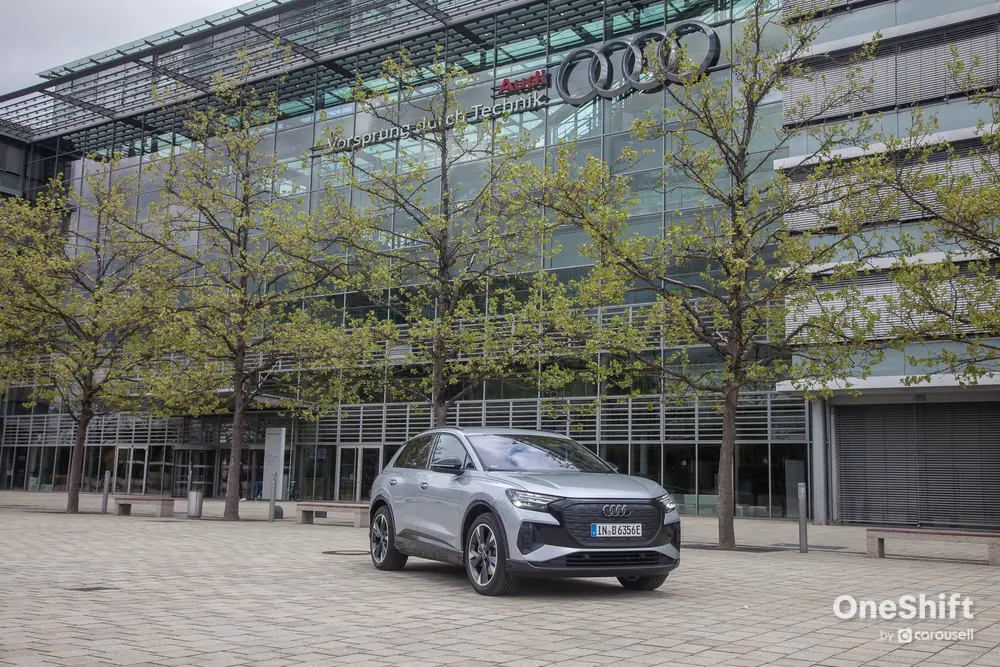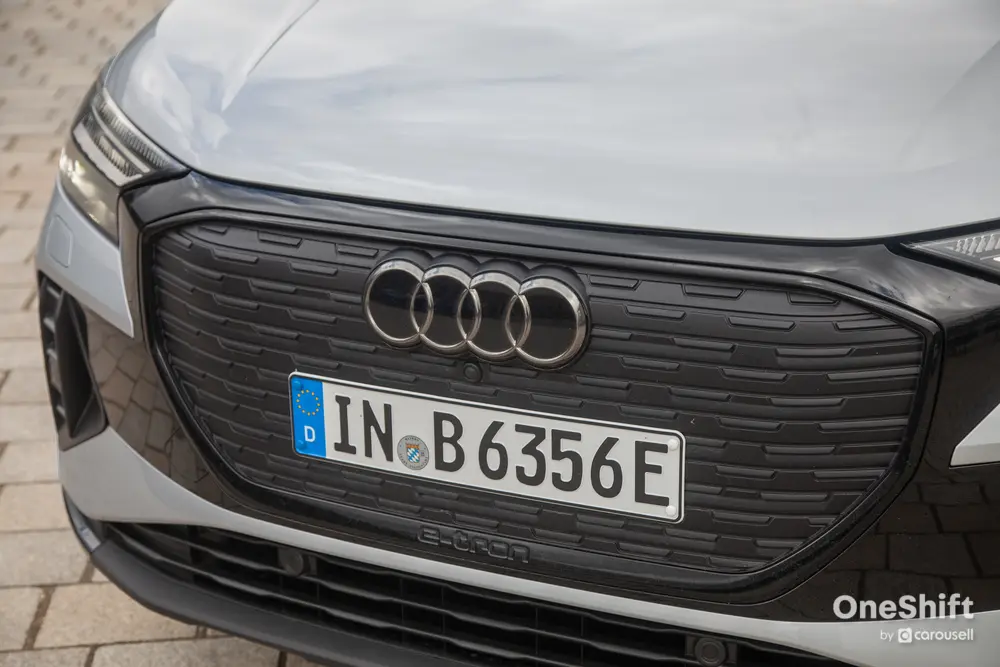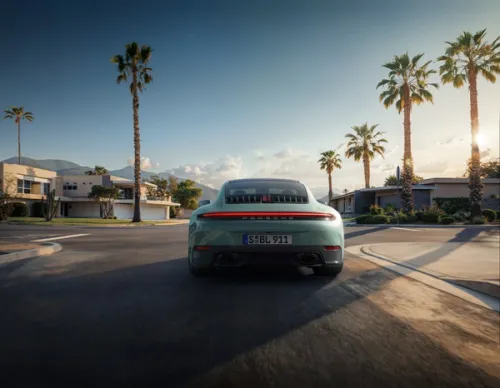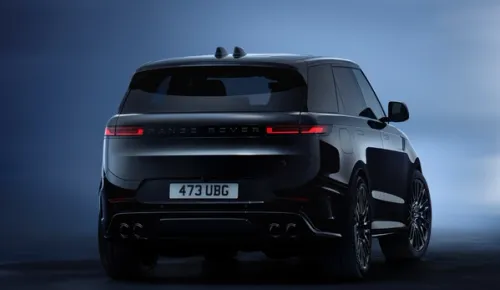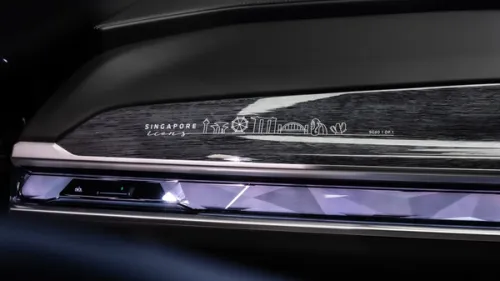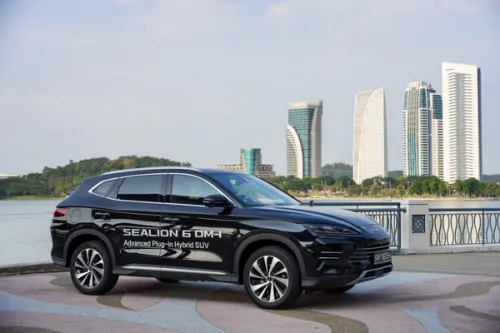Audi Q4 45 e-tron First Drive Review: Conquering Bavaria to Saxony
Audi’s first foray into the compact electric SUV segment is a convincing mix of style, clever packaging and refinement.







MUNICH, Germany - It’s been a year since Singapore first had a glimpse of the Audi Q4 e-tron at House of Progress, so it’s timely that we now get to road test the car before its official start of sales in June.
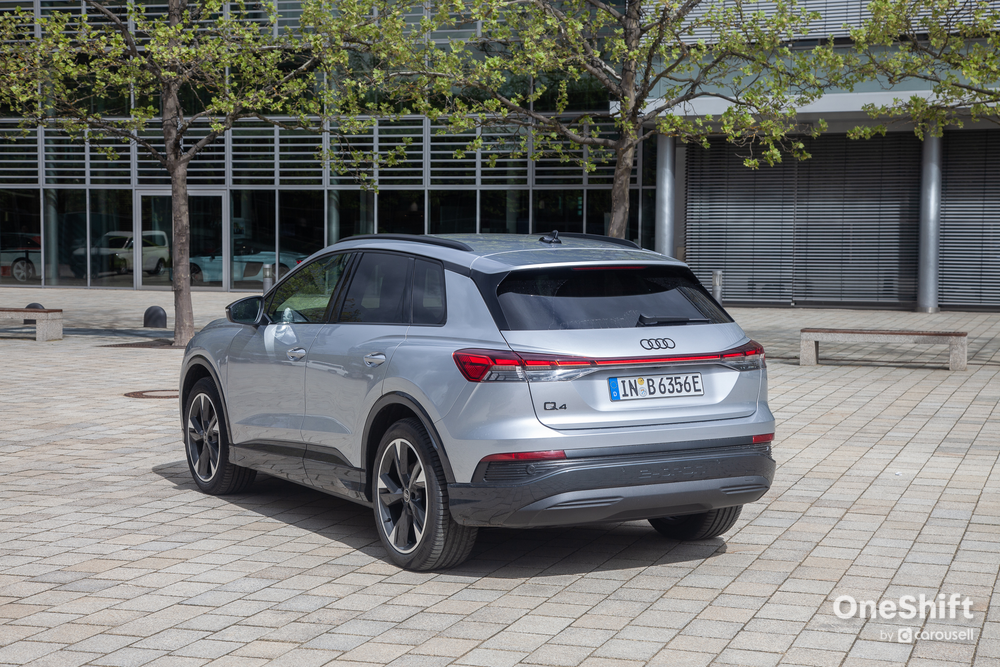
We were brought to Germany to sample the car on a road trip from Munich all the way to Zwickau, which is one of two production sites for the Q4 e-tron, and also the largest. It is a facility that uses eco-electricity and therefore the Q4 e-tron is produced with a neutral carbon footprint.

To recap, the Q4 e-tron is Audi’s most affordable electric vehicle to date; although there is no official pricing information as of yet, we expect the car to come under the psychological S$300k mark, or approximately $170k without COE as of the Singapore Motorshow earlier this year.
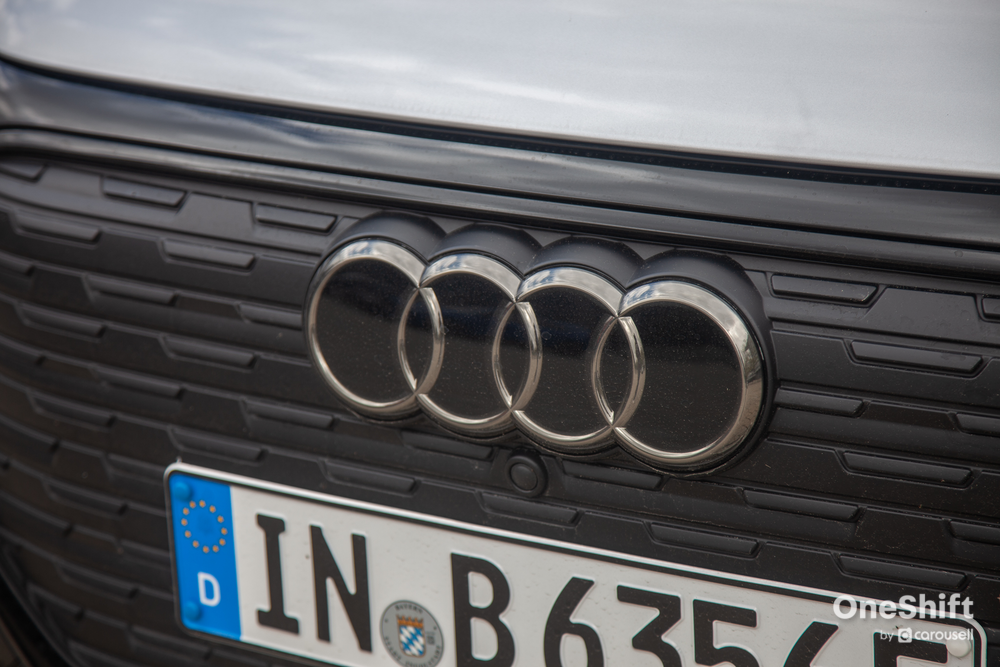
This puts it squarely in competition with the Mercedes-Benz EQA and BMW iX1 in the luxury class, while most other options in the price range are more mainstream, like the Volvo C40, Maxus MIFA 9 and Polestar 2.
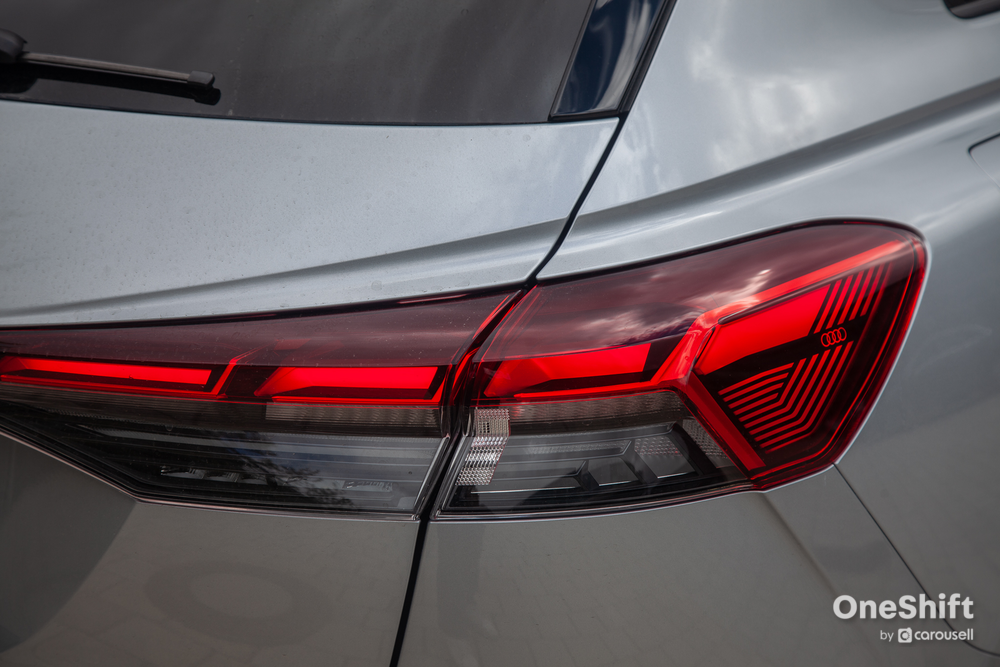
The EQA is an early entrant to the market and therefore it comes as no surprise that it is built on the fossil fuel-driven GLA platform. The iX1 is a more recent car to our shores, but it too is based on the ICE X1. Therefore, in the luxury class, only the Q4 e-tron is built on an electric-only modular chassis, dubbed MEB. This is already a great start as MEB would have been optimised for electric vehicle layout and packaging.
Which Q4 e-tron variants are available in Singapore?

While both 45 and 55 variants of the Q4 e-tron will be available overseas, in Singapore only the 45 will be offered in both normal SUV and Sportback styles. It will come in two trim levels, advanced and Edition 1.

The notable additions for Edition 1 are matrix LED headlights, exterior gloss black finishes, larger 21-inch rims (versus 19-inch), sport seats, a SONOS sound system and an augmented reality head-up display (AR HUD).

Both are good for 286 PS and 545 Nm, which are very healthy numbers especially when you consider they only go to the rear wheels. Range is rated at 466 km (WLTP) for the SUV while the Sportback manages a bit more, at 482 km. At the Autobahn speeds we were cruising at, plenty of which at the top speed of the Q4 e-tron at 180 km/h, we were getting around mid to high 300 km of range.
For clarity, we had a go in the Q4 45 e-tron, but it was neither in advanced nor Edition 1 Singapore specification, and had 20-inch rims instead.
What does the Q4 e-tron look like on the outside?

It’s a great looking SUV. Audi intentionally made front overhangs short and incorporated quattro-like bulges over the wheel arches to give an elegant, dynamic stature. It is also slippery in the air, boasting a drag coefficient of only 0.29 (0.28 in the Sportback).
A key design feature is the matrix LED headlights which only come as standard in the Edition 1 trim. They include a finely engineered metal piece within that speaks volumes of Audi’s quality and detailing. Like the new A3, the Q4 e-tron also comes with four digital light signatures (a world’s first) via the headlights for distinction, especially at night.
Is the Q4 e-tron’s interior typically Audi?
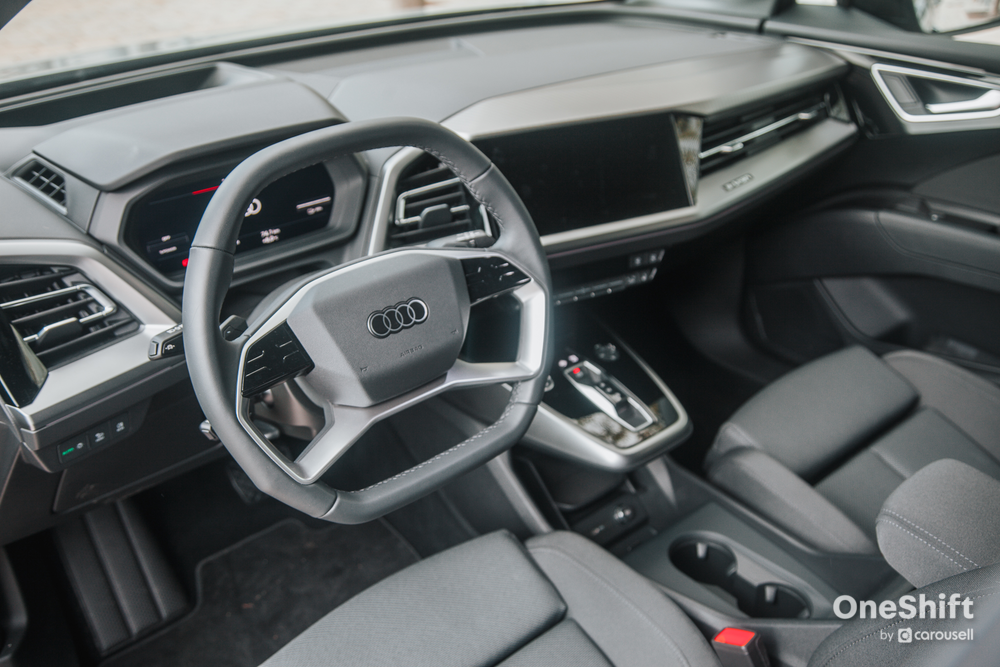
Audi didn’t just apply its award-winning design and materials to the Q4 e-tron and be done with it. There’s some proper packaging cleverness involved, perhaps picking up lessons from the other Volkswagen Group MEB models launched prior.

One standout feature is the spaciousness of the interior, thanks to the 2,764 mm wheelbase which is closer to the Q5 than the Q3. The dashboard is raised high but this negates any effect of a high floor so typical of other EVs. Instead, in the Q4 you sit naturally just like any other ICE car. The centre dashboard is also curved towards the driver, which is a nice touch.
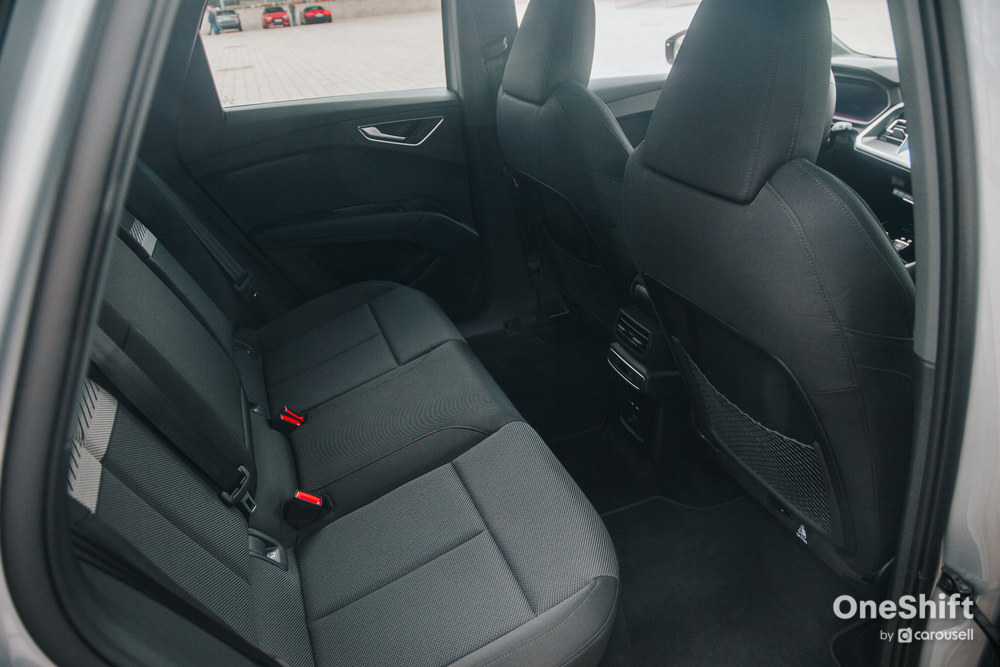
The other is the number - and size - of storage available within the cabin. A total of around 25 litres of storage space is available, and my favourite is the cubby hole at the forward top of each door which can easily hold a 1-litre water bottle. It’s so useful and accessible. Boot space is 520 litres (535 litres in the Sportback) which trumps both the iX1 and the EQA by a significant margin, being more than 50% larger than the latter’s!
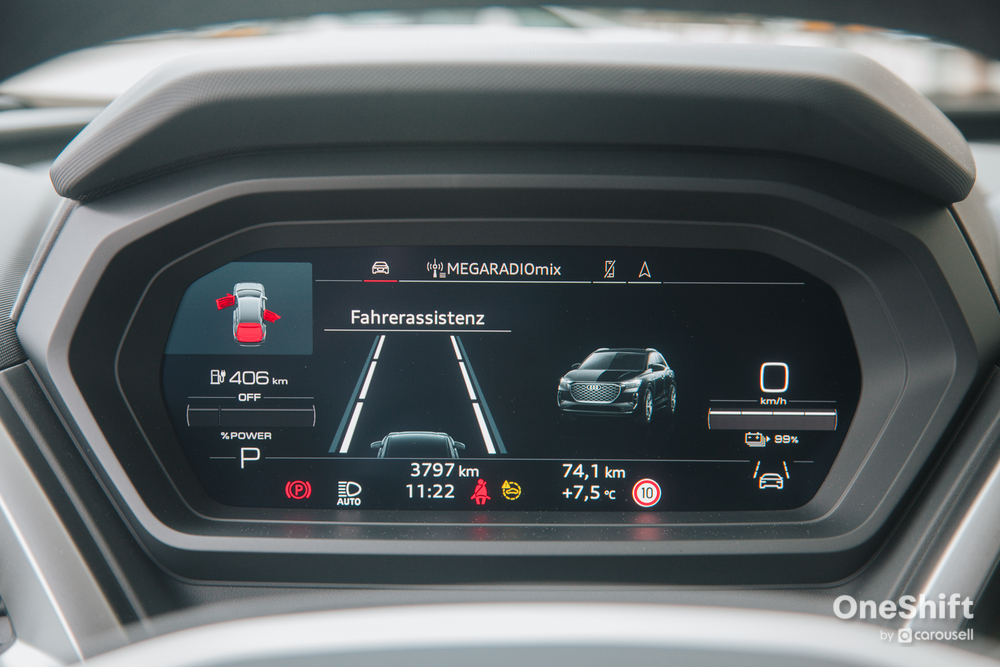
In the S-line interior of the Edition 1, its seat upholstery contains large amounts of recycled polyester - around 26 recycled 1.5-litre PET bottles are used for each seat! You wouldn’t be able to tell though as it is mostly high-quality materials inside, although some parts feel slightly below Audi’s usually impeccable standards if you look hard enough (for example, at the lower part of the front doors or the rear doors). Although, we must be reminded again that this is the most accessible EV from the brand.
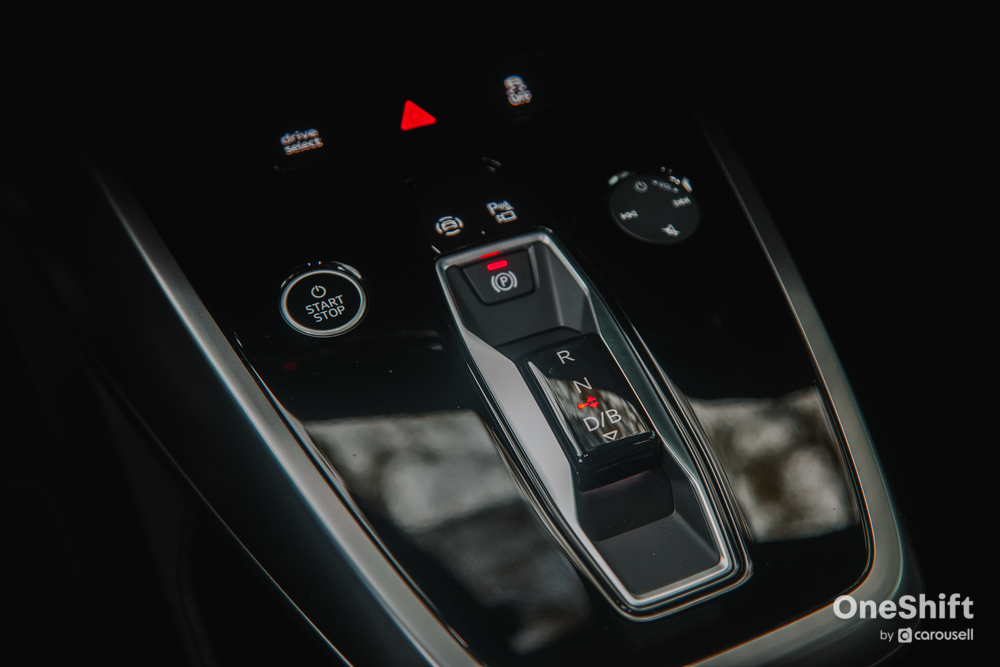
There are some Edition 1 specific features that really elevate the interior, like the SONOS sound system and the AR HUD. In my opinion, these are frequent touch points which would be really noticeable and appreciated when driving. I didn’t get to test the SONOS sound system to its full potential but it was pleasant to my ears despite the guttural German voices playing on local radio. The AR HUD really enhances the driving experience especially when navigation is used; it is both useful (helping me discern some confusing junctions) and cool (it almost feels like in a computer game!).
How is the Q4 e-tron like to drive?

There’s maturity in the way the Q4 e-tron goes about its things as if it is a much bigger car. It is whisper quiet thanks to sound deadening foam being incorporated into the roof, over the electric motor, bulkhead and even the rear bumper. As standard, the windshield uses acoustic glass. The result is that despite going through various road surfaces, the interior is always hushed.
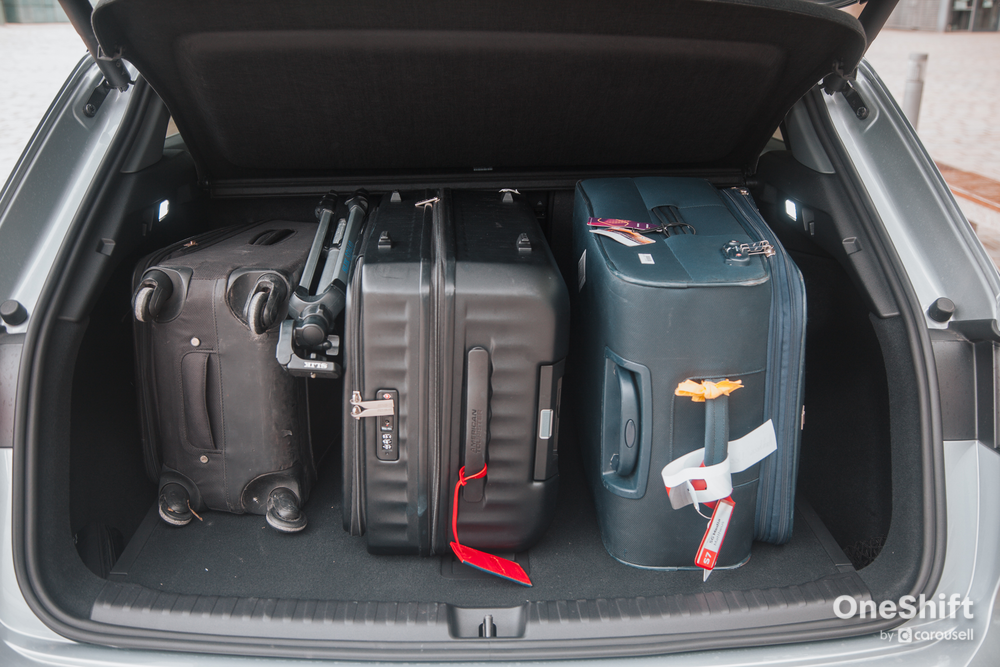
It is also an immensely stable car at speed. On the Autobahn going at its top speed of 180 km/h, the car had much more to give. It felt like it could easily hit 250 km/h without batting an eyelid, if given the ability to. That said, what’s more important is its 0-100 km/h sprint for Singapore, which it does in a respectable 6.7 seconds. That said, for the stated power on paper, it felt like the car’s performance has been artificially limited somewhat so as to give better range or drivability. I’m not really complaining as there is less of the dizzying “on-off” acceleration of some EVs which genuinely causes me headaches at times.

Regeneration in Audis have always been quite advanced - it was in one when I first felt a car slowing itself down automatically when it detects slowing traffic in front - but the Q4 e-tron takes it one step further by incorporating navigation and topographical data. Simply put, if it detects a downhill slope coming up for example, it will ramp up the regeneration. It’s pretty smart and works incognito in the background without being intrusive at all.
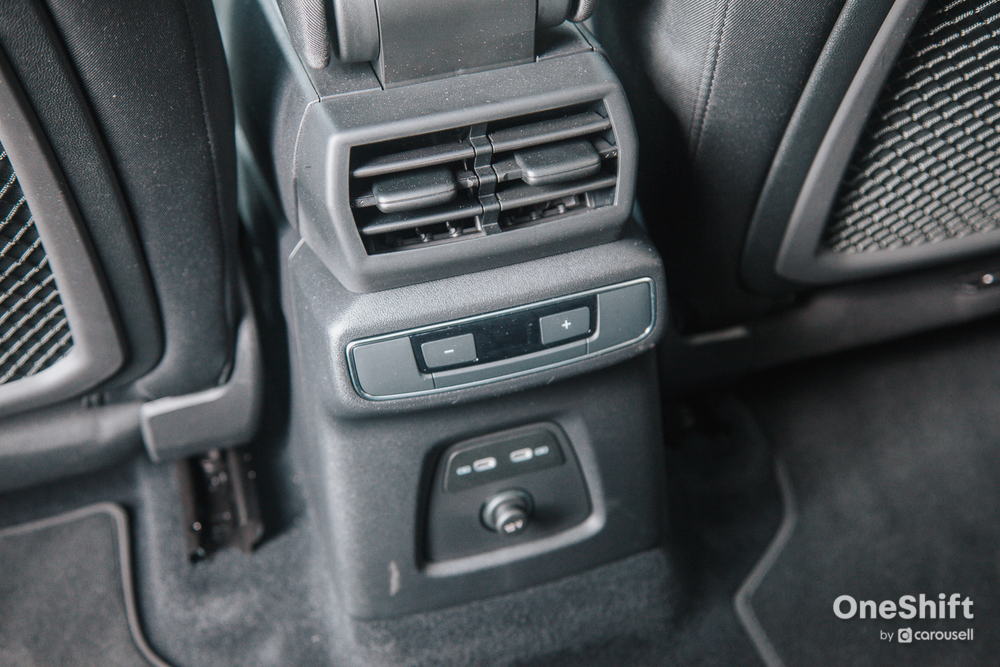
Although we didn’t have much time with the Q4 e-tron on B-roads, I intentionally turned off an earlier exit on the Autobahn near to Munich Airport where there were some lovely lanes around small villages. Here the low centre of gravity and near 50:50 weight distribution of the car, thanks to the placement of its battery between both axles, became obvious; the car hugs the road and is unruffled despite being in an unnatural environment for an SUV. Its rigid body transmitted very little of the harshness of the road into the cabin, with ultra-high strength steel used for the passenger cell. Its expensive suspension setup (McPherson fronts and five link rears) more commonly seen in pricier Audis paid dividends in giving a cushy and well-judged ride.
How was the charging experience of the Q4 e-tron?
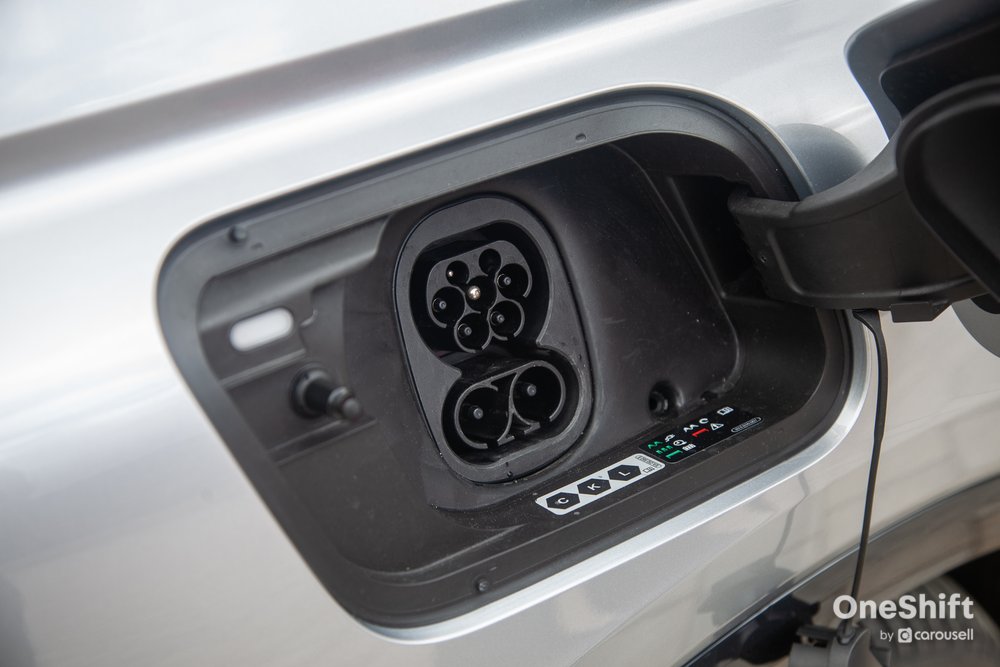
The Q4 e-tron has a maximum charging capacity of 135 kW, which is comparable to the iX3 (130 kW) while the EQA trails both at 100 kW (all using DC). So to charge up the 82 kWh battery, it’ll take around half an hour to get from 10% to 80%.
Although this is not the fastest charging speed around by any measure - the e-tron GT manages 270 kW, for example - in our use of IONITY, Aral Pulse and Audi chargers it never took more than a cup of coffee and toilet break to get ourselves charged up to 80%.
Also, Q4 e-trons received an update last year which includes a permanently excited synchronous machine (PSM) rear motor. With this and optimisations in the transmission for distributing oil, the powertrain runs much cooler, which no doubt aids in better range as well.
What’s your conclusion about the Q4 e-tron?
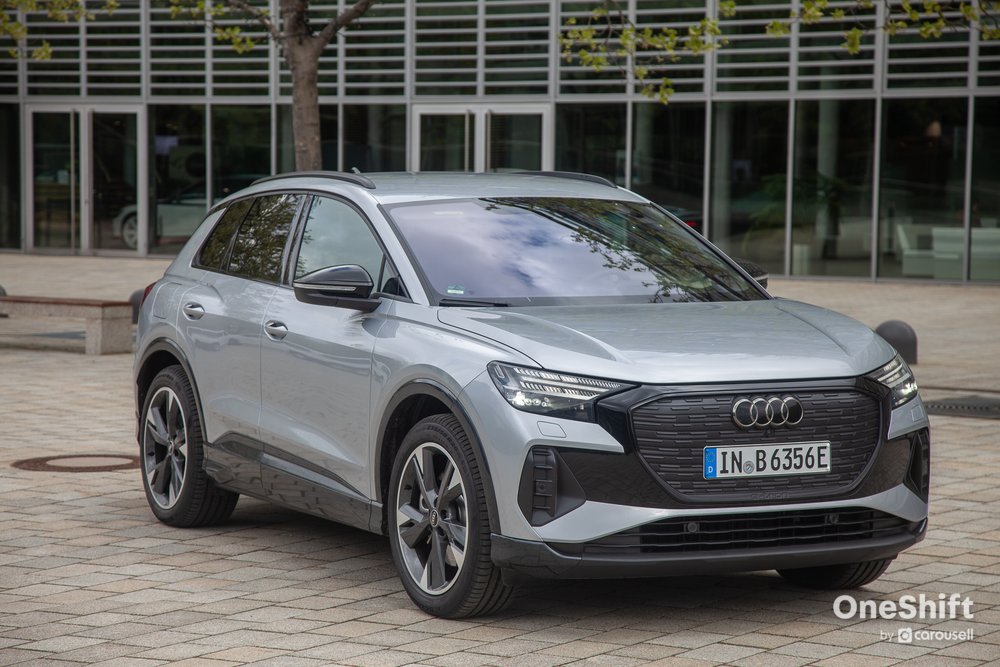
The Q4 e-tron is an attractive proposition at its price point because of its MEB platform, which endows it with superior interior space and better packaging overall. Although sitting in the compact class, it feels like a car from a class above, or two. Conquering Bavaria to Saxony in a matter of 3 days felt like a breeze; Singapore should be altogether even easier.
Photos by James Wong and Clifford Chow
---
Purchase your next car seamlessly with Carousell Certified.
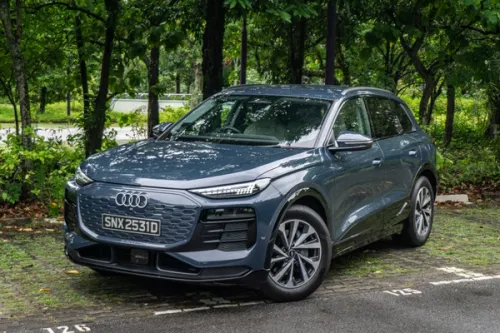







Get the Best Price for your used car
from 500+ dealers in 24 hours

- Convenient and Hassle-Free
- Consumer Protection
Transparent Process
With No Obligation
